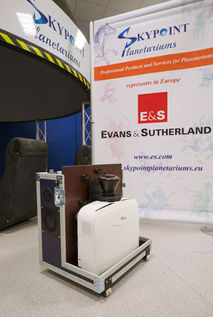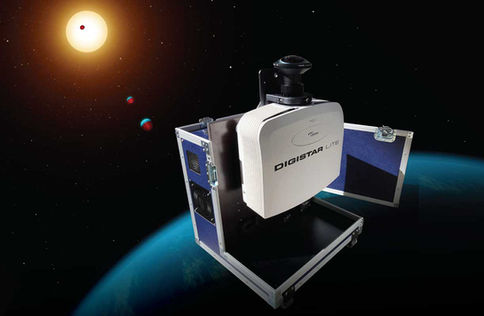The company was founded in 1968 by David C. Evans and Ivan Sutherland, professors in the Computer Science Department at the University of Utah who were pioneers in computer graphics technology.
They formed the company to produce hardware to run the systems being developed in the University, working from an abandoned barracks on the university grounds.
The company was later housed in the University of Utah Research Park.
Most of the employees were active or former students, and included Jim Clark, who started Silicon Graphics, Ed Catmull, co-founder of Pixar, John Warnock of Adobe, and Scott P. Hunter of Oracle.
Later in the 1970s the company expanded their line of simulation systems, first building a five-projector graphics system to simulate a ship steaming into New York Harbor and through its surroundings.
This graphics system was installed on the mock-up of a ship's bridge and used to train ship's pilots how to navigate into and out of New York Harbor.
The project, called CAORF (Computer Aided Operations Research Facility), was built for the US Maritime Academy.
The project paved the way for other visual simulation systems including a NASA Space Shuttle manipulator arm, EVS, submarine periscope and space station docking simulators.
In 1978 the company went public with a listing on NASDAQ.
In the 1980s E&S added a Digital Theater division, supplying all-digital projectors to create immersive mass-audience experiences at planetariums, visitor attractions and similar education and entertainment venues.
Digital Theater grew to become a major arm of E&S commercial activity with hundreds of Digistar 1 and 2 systems installed around the world, such as at the Saint Louis Science Center in St. Louis, Missouri.
Since its launch in July 2002, the company's Digistar 3 system Digital Theater system and is installed in upwards of 120 fulldome venues worldwide.
On May 9, 2006 Evans & Sutherland acquired Spitz Inc, a rival vendor in the planetarium market, giving the combined business the largest base of installed planetaria worldwide and adding in-house projection-dome manufacturing capability to E&S' offering.
In 2006 Evans and Sutherland sold its simulation business, which for decades was the core of the company, to Rockwell Collins.
On February 10, 2020 Elevate Entertainment and Evans & Sutherland announced that Elevate would purchase E&S for $1.19 per share in cash in a transaction valued at $14,500,000.
-Wikipedia-
Digistar II
First digital projector (fisheye + computer)
1983: Digistar 1 Hansen Planetarium, Salt Lake City, UT; Richmond, VA;
1995: Digistar II
2002: Digistar 3 (multi projectors)
2010: Digistar 4 (multi projectors)
2012: Digistar 5 (multi projectors)
2016: Digistar 6 (multi projectors)
2020: Digistar 7 (multi projectors)












